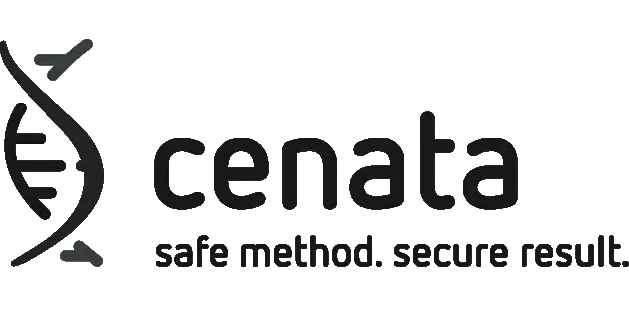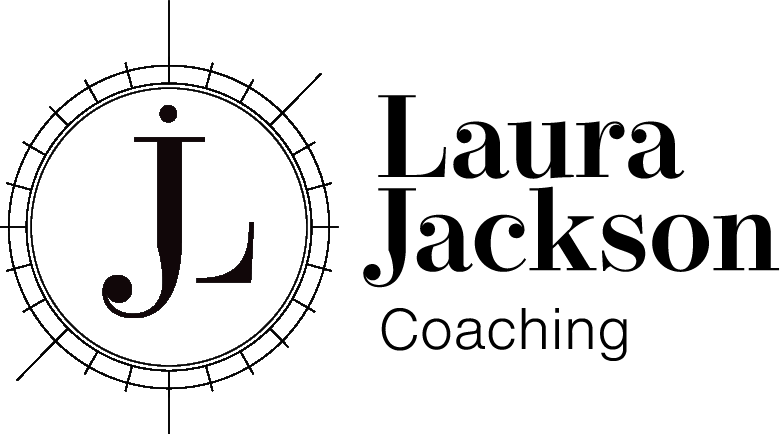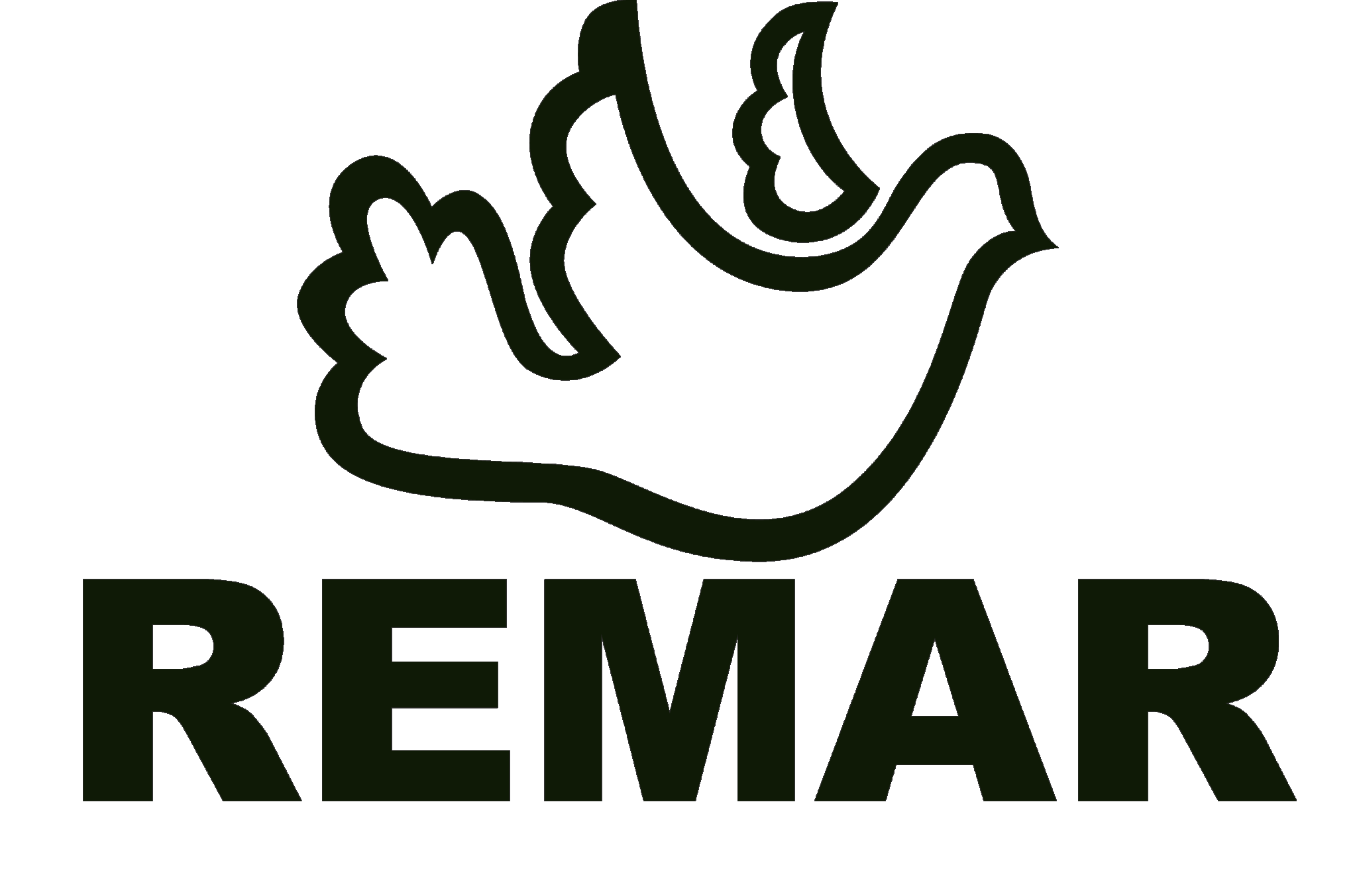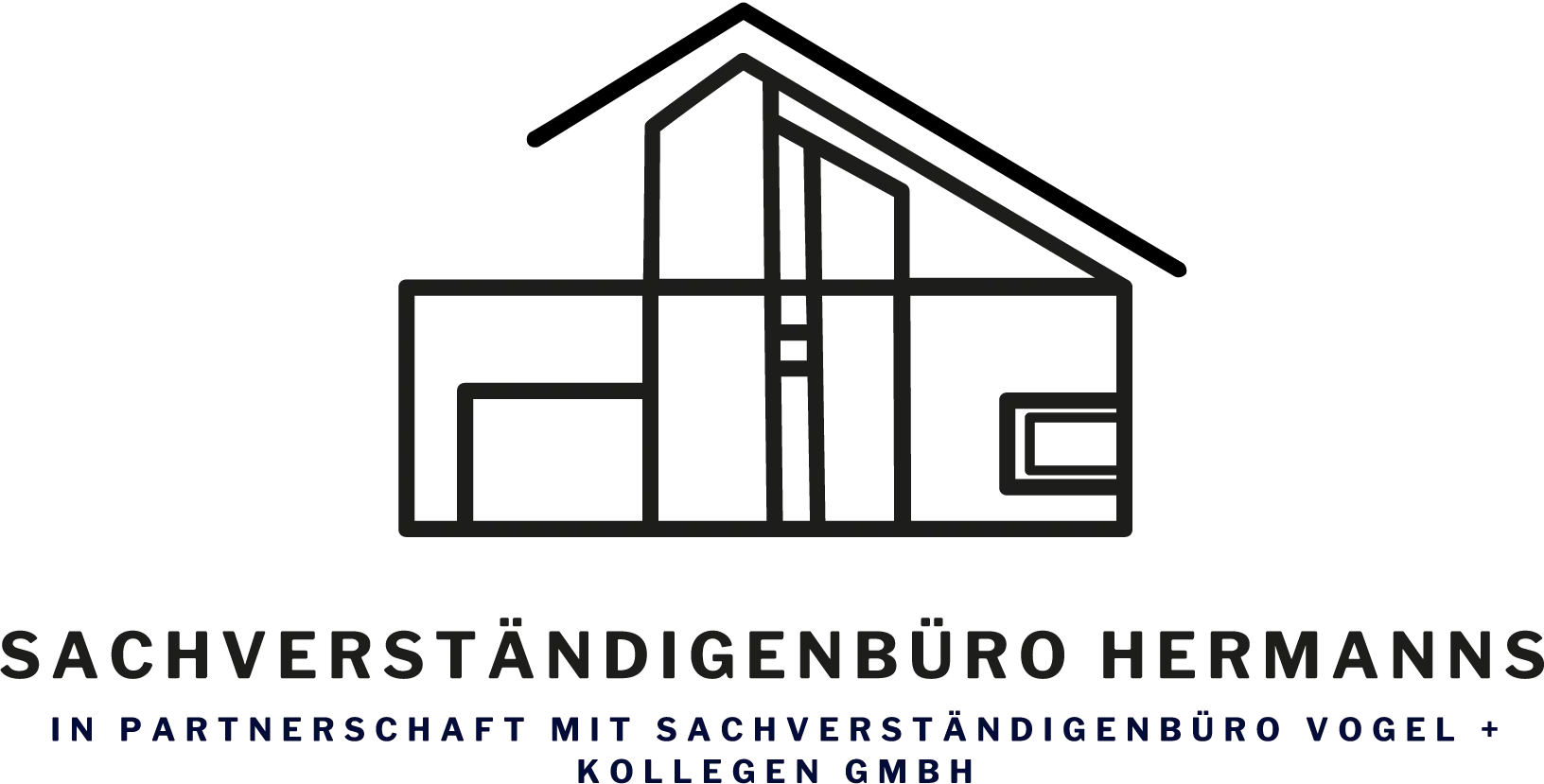SEO – Web design – Google Ads – Social media
Professional website creation: Your basis for digital success
Your agency for professional website creation – modern websites that win customers and create trust.
Individual marketing solutions
Graphic design
We create modern designs that visually strengthen your brand, create trust and are remembered for a long time.
Online stores
We develop sales-boosting online stores that present your products in the best possible way and lead customers directly to a purchase.
Online marketing consulting
We analyze your marketing holistically, develop clear strategies and sustainably increase your online presence.
Accessibility
We check and optimize your website according to BFSG standards - for legal certainty, greater reach and better SEO.
Certification
We check your website according to over 100 SEO criteria and certify it for top performance and maximum visibility.
Domain & Hosting
We take care of domain, hosting and maintenance - everything from a single source, secure, fast and professionally managed.


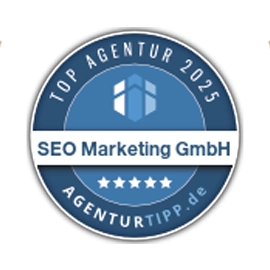

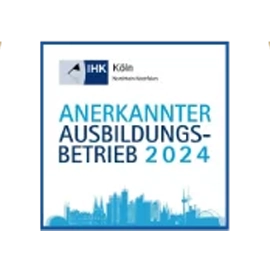
Why professional website creation goes beyond design
Is your current website more of a digital construction site than an effective customer acquisition tool? Many companies invest in an online presence that neither looks professional nor delivers measurable results. This is because an outdated look, unclear messages or technical deficiencies cause potential customers to bounce and switch to the competition – often irretrievably.
This is exactly where we come in as your experts for professional website creation. We understand that a successful website is far more than just an appealing design. Rather, we develop strategic online platforms that support your business goals, build trust and convert visitors into paying customers. That’s why website creation is a results-oriented process for us.






When your online presence prevents business instead of promoting it
Your website is often the first and decisive impression a customer has of you. If this impression is negative – due to slow loading times, confusing navigation or a lack of mobile optimization – this directly damages your reputation and your sales. Especially in today’s competitive market, you cannot afford to lose prospective customers due to an unprofessional online business card.
Our task is to design and implement a website that reflects your expertise and serves as an effective marketing tool. To do this, we analyze your target group, define clear goals and develop a structure that intuitively appeals to visitors and motivates them to take action. We build websites that work for your business.
Your website: Not just an expense, but your most important sales tool
The question is not whether you need a website, but which one. Investing in a professional website is not an expense, it’s building your central digital sales and communication channel. While many entrepreneurs hesitate, successful companies see their website as a strategic asset that continuously generates leads and strengthens the brand. When you have a website created, you are investing directly in your growth.
Targeted customer acquisition instead of random hits
A strategically planned website leads users specifically to their goal. With clear calls to action (CTAs), intuitive user guidance and compelling content, we ensure that your visitors not only look, but also act – whether it’s contacting you, making a purchase or requesting an appointment.
A professional appearance that creates trust
Design is more than appearance – it is communication. A high-quality, modern web presence that is tailored to your brand signals professionalism and immediately creates trust. As a result, we strengthen your credibility and set you apart from the competition.
Technical excellence for sustainable success
A website must function flawlessly in the background. That’s why we attach great importance to clean code, fast loading times, mobile optimization (responsive design) and a technical basis that supports search engine optimization (SEO) right from the start and enables future extensions without any problems.
Analyze your website for free – more visibility now!
Have your website analyzed free of charge and discover optimization potential immediately. Get a quick SEO check with clear tips for better rankings, more visibility and more customers - free of charge, professionally and without obligation.
Our way to your new website: Clear, structured, results-oriented
An outstanding website is not created by chance, but through a proven process.

Strategy & conception
We start with a workshop to understand your goals, target group and competitors. We then develop a clear site structure (sitemap) and a technical concept.

Design & User Experience (UX)
Our designers create a customized, modern layout that reflects your brand and ensures an optimal user experience. We attach great importance to intuitive navigation and clear user guidance.


Technical implementation & programming
Our developers implement the design using the latest technology. We ensure a fast, secure website that works perfectly on all devices, often based on a flexible CMS such as WordPress.

Testing, launch & support
The website is tested intensively before going live. After the successful launch, we are available for training and, if required, for ongoing maintenance and further development.

Ready for a website that delivers results?
Don’t leave your digital success to chance or outdated technology. A professionally created website is the key to more visibility, qualified inquiries and sustainable business growth.
Request a free, no-obligation initial consultation now and find out how we can take your company to the next level online.
Frequently asked questions about website creation
What does it cost to create a professional website?
The costs for a professional website creation are individual and depend heavily on the scope (number of pages), the design (template or individual) and the required functions (e.g. store, booking tool). After an initial consultation, you will receive a detailed, transparent offer from us. Think of it as an investment that will quickly pay for itself through new customers.
How long does it take to have a new homepage created?
The project duration varies depending on the complexity. A smaller company website can often be realized in 4 to 6 weeks, while more extensive projects with special functions can take several months. Good planning and your prompt input will speed up the process.
Why should I hire an agency and not use a website builder?
Construction kits are suitable for very simple purposes, but quickly reach their limits in terms of design, functionality, loading time and search engine optimization. An agency offers a tailor-made solution, strategic advice, professional design and a technically clean implementation that is designed for long-term success and growth.
Is my new website automatically optimized for Google?
When creating websites, we attach great importance to an SEO-friendly technical basis and structure (clean code, fast loading times, mobile optimization, logical page structure). This is the basis for good rankings. For comprehensive visibility, however, we recommend subsequent, targeted SEO support.
Learn more
Mobile First
Depending on the industry, up to 90% of search queries are made using a smartphone or tablet. It is therefore particularly important that your website is specially adapted to mobile devices. With our mobile first approach, every end device is supported. With responsive design, your website is automatically adapted to smartphones, tablets, laptops or desktops. This ensures that every visitor has the best possible experience on your website.
SEO optimization
What good is the best website if nobody can find it? On average, 60% of all users click on one of the first 4 search results, and on the second page of the search engines this figure drops to 90%. Your new website will be adapted from the ground up to meet the requirements of all major search engines. This will get you to the top search results in no time at all. Through targeted keyword research, fast loading times and search engine optimized structure, your new website will not only be aesthetically pleasing, it will also be found by your customers!
Maintenance
You can also present your company at its best from a technical perspective. Whether it’s the implementation of a new tool, you need personal e-mail addresses such as kontakt@Ihrewebseite.de for your employees or new subpages need to be created for the expansion of your online store: Our programmers will fulfill your every wish and ensure error-free maintenance of your website. Thanks to regular backups, you don’t need to worry about the security of your website and with one year of free hosting, your every need is covered. So you can concentrate on the essentials again – your customers!
Your website creation
Whether you are no longer satisfied with your current website or would like to have a new one created – with innovative designs, exciting texts and professional management of your website, nothing stands in the way of your success! Let SEO Marketing GmbH advise you on your new website free of charge and without obligation and find out everything about search engine optimization, social media support and more.
Individual website creation
- 1 year free domain
and hosting - Customized texts, graphics
and more - Monthly maintenance of your
typo3 site - Suitable for every industry
Holistic marketing support
- Detailed marketing
advice - Holistic strategies
for your company - Long-term
successes - One contact for all concerns
What types of websites are there and which one best suits my needs?
There are a variety of types of websites, each serving different purposes and functions. Here are some common types of websites and their typical uses:
Corporate website: A corporate website is used to present a company or organization online and provide information about products, services, locations, contact options and more. It is well suited for companies of all sizes that want to expand their online presence.
Online store (e-commerce website): An e-commerce website enables companies to sell their products or services online. It includes features such as product lists, shopping carts, payment processing and shipping options. An e-commerce website is ideal for companies that want to sell products or services online.
Blog: A blog is a website on which regular posts on specific topics are published. Blogs can be personal (e.g. lifestyle blogs) or business-related (e.g. company blogs, specialist blogs). They are well suited for people or companies who want to share content to show their expertise, disseminate information or get in touch with their target group.
Portfolio website: A portfolio website is used to present the work, projects, references or creative works of a person or company. It is ideal for artists, photographers, designers, freelancers or agencies who want to present their work online.
Landing page: A landing page is a single page created specifically for marketing purposes, e.g. to lead visitors to a specific action such as buying a product, signing up for a newsletter or downloading an e-book. Landing pages are well suited for advertising campaigns to maximize conversions.
Community or social network website: A community website or social network allows users to register, create profiles, share content, communicate with each other and network. They are well suited for companies or organizations that want to build an online community to connect with customers, members or interest groups.
The best type of website for your needs depends on several factors, including your goals, your industry, your target audience and your resources. For example, if you want to sell products, an e-commerce website is the best choice. However, if you want to share content or showcase your work, a blog or portfolio website might be more suitable. It’s important to analyze your goals and requirements and choose the type of website that suits you best.
What costs are associated with the creation and maintenance of a website?
The cost of creating and maintaining a website can vary greatly depending on the individual requirements, the scope of the website and the desired functions. Here are some important cost factors that should be considered when planning a website:
Domain name: The cost of registering a domain name depends on the domain extension chosen (e.g. .com, .de, .net) and the domain provider. The annual costs for a domain typically range from a few euros to several hundred euros, depending on the availability and popularity of the domain name.
Web hosting: The cost of web hosting varies depending on the hosting provider, the hosting plan chosen and the resources required such as storage space, bandwidth and server performance. Shared hosting plans are usually cheaper and suitable for smaller websites, while dedicated servers or cloud hosting plans cost more but offer more performance and flexibility.
Website design and development: The cost of designing and developing a website depends on several factors, including the scope of the work, the complexity of the features, the number of pages and the experience of the web designer or developer. Prices can range from a few hundred to several thousand euros, depending on individual requirements.
Content creation: The cost of creating content such as text, images, videos or graphics can vary depending on the scope and quality of the content. If you have professional content created, the costs can be higher than if you create content yourself.
E-commerce functions: If you want to operate an online store, there are additional costs for e-commerce functions such as payment processing, shopping cart, product listings and security functions. These costs can be incurred through monthly subscription fees or transaction fees.
Maintenance and updates: Regular maintenance and updating of your website is important to ensure security, performance and functionality. The cost of maintenance and updates can vary depending on the frequency of updates required and the complexity of the website.
Marketing and advertising: Additional costs may be incurred for marketing and advertising activities such as search engine optimization (SEO), online advertising, social media marketing and content marketing to drive traffic to your website and reach your target audience.
It is important to set a budget for the creation and maintenance of your website and carefully consider the costs of various services and features. Careful planning and analysis of costs can help ensure that your website is successful and stays within your budget.
How can you protect your website from security risks such as hacking and malware?
Protecting your website from security risks such as hacking and malware is crucial to ensure the integrity, confidentiality and availability of your data and the safety of your users. Here are some best practices to protect your website from security risks:
Use strong passwords: Use strong, unique passwords for all accounts, especially for administration access and FTP access. Avoid simple passwords and use a combination of upper and lower case letters, numbers and special characters.
Regular updates: Keep your content management system (CMS), all plugins, themes and other software components of your website up to date to close security gaps and fix known vulnerabilities. Carry out regular updates as soon as they are available.
Secure hosting environment: Choose a trusted hosting provider that has security measures in place such as firewalls, DDoS protection and regular security checks. A secure hosting environment is crucial for protecting your website from external attacks.
HTTPS encryption: Implement SSL/TLS encryption (HTTPS) for your website to encrypt the transmission of sensitive data between your server and users. HTTPS protects against man-in-the-middle attacks and increases user confidence in your website.
Firewall and security software: Install a firewall and security software on your server to block suspicious network traffic and protect your website from attacks and malware. Also use anti-virus and anti-malware software on all devices in use.
Security policies and access restrictions: Implement access restrictions and security policies for administration areas and sensitive files on your website. Limit access to authorized users and use strong authentication methods such as two-factor authentication (2FA).
Backup and restore: Create regular backups of your website and store them in a secure location that is protected from external attacks. A reliable backup solution enables you to restore your website quickly in the event of a security incident.
Security audits and penetration tests: Conduct regular security audits and penetration tests to identify and fix potential vulnerabilities and security gaps before they can be exploited by attackers.
By implementing and regularly reviewing these best practices for securing your website, you can minimize the risk of hacking and malware infections and increase the security of your website. Keeping your website secure should be an ongoing priority to protect your data and users from threats.
Introduction to website creation
In today’s digitally connected world, a professionally designed website is more than just a figurehead for companies; it is a fundamental prerequisite for business success and competitiveness. The importance of a website ranges from increasing visibility to creating a platform where customers and businesses can interact. This post will provide a basic overview of website creation, including the important steps any business owner or web developer should consider when building an effective online presence.
First, it’s important to understand why a website is essential for modern businesses. In an era where the majority of consumers conduct online research before making a purchase, a website offers the opportunity to be found and influence purchasing decisions. A well-designed website not only improves brand perception, but also makes it possible to provide comprehensive information about products or services, collect customer feedback and make direct sales via digital platforms.
The process of website creation begins with careful planning and definition of the business objectives that the website should support. This is followed by the selection of a domain name, which should not only be memorable but also relevant to the business area. The next step is hosting, where the website is stored on a server that ensures its constant availability on the Internet.
Creating the actual web design is a crucial step that encompasses visual aesthetics and usability. It is crucial that the website is both attractively designed and offers an intuitive user interface that allows visitors to navigate easily and find the information or services they are looking for quickly. Modern websites should be responsive, which means they need to look and function well on different devices, such as smartphones and tablets.
Finally, ongoing maintenance and updating of the website is crucial to ensure security, keep the content up to date and improve the SEO (search engine optimization) strategy that ensures the website ranks well in search results. Website creation is not a one-off project, but an ongoing process that needs to be adapted to the ever-changing demands of the digital marketplace.
By incorporating these aspects into the website creation process, businesses can ensure that their online presence is strong, relevant and effective, which ultimately leads to a better bottom line.
Planning a website
Planning a website is a key aspect that determines its success. It starts with a clear objective and an in-depth analysis of the target audience, followed by careful structure and content planning. This step is crucial to ensure that the website is not only attractive, but also functional and tailored to the users’ needs.
Objective
The objective is the starting point for any website planning. Companies need to clearly define what they want to achieve with their website. The goals can be varied, such as increasing online sales, improving customer loyalty, collecting leads or simply providing information about products and services. Setting specific, measurable, achievable, relevant and time-bound (SMART) goals allows developers and the marketing team to align their strategies accordingly and effectively measure the success of the website.
Target group analysis
Target group analysis is just as critical. It involves understanding who the website users are, what they need and how they behave. By analyzing demographic data, interests, online behaviors and other relevant information, companies can create a detailed profile of their target audience. This knowledge not only helps to tailor content to users’ needs and desires, but also to decide how information should be presented to achieve maximum impact.
Structure and content planning
Once the goals have been set and the target group analyzed, the next step is structure and content planning. Here it is decided how the website will be organized, which pages are needed and how the navigation should be designed. A logical, intuitive structure is crucial so that visitors can navigate through the website efficiently and without frustration. Each page should have a clear purpose and the user guidance must always support the goals of the website.
Content planning is about creating relevant and engaging content that informs the visitor while encouraging them to take action. Content can include text, images, videos and interactive elements. It is important that all content is SEO-optimized to ensure a good ranking in search engine results. In addition, the topicality and relevance of the content should be regularly checked and adapted.
Planning a website is a complex task that requires strategic thinking and careful execution. By taking the time to set goals, analyze target audiences, and plan structure and content, you lay the foundation for a successful and powerful website that effectively supports your business goals and maximizes the user experience.
Choosing the right domain name and hosting provider
Choosing the right domain name and a reliable hosting provider are crucial steps in creating a successful website. These decisions have a direct impact on the visibility and accessibility of your website. Here are some tips for choosing a concise domain name and an overview of the different hosting options.
Tips for choosing a concise domain name
Short and memorable: A short domain name is easier to remember and type. Avoid complex and long names, as these can often lead to typing errors.
Use keywords: Integrate important keywords that describe your business activity. This not only improves SEO friendliness, but also immediately gives an indication of the content of your website.
Avoid numbers and hyphens: Numbers and hyphens can be confusing and are often typed incorrectly. It’s best to stick to letters to ensure clarity.
Choose the right domain extension: The classic .com is always popular, but depending on your business sector, other top-level domains (TLDs) such as .tech, .store or .news could also be useful.
Think about the future: Choose a domain name that is not only relevant today, but also in the future and offers the opportunity for expansion.
Comparison of hosting options
The choice of hosting provider should be tailored to the specific needs of your website. Here are common types of web hosting services:
Shared hosting: This is a cost-effective option where you share server resources with other websites. Ideal for smaller websites with low traffic volumes.
VPS (Virtual Private Server) Hosting: Offers more control and resources than shared hosting, without the cost of a dedicated server. Suitable for websites with medium traffic volumes.
Dedicated hosting: You have a server all to yourself. This offers maximum resources and control, but comes at a higher cost. Ideal for large websites with high traffic volumes.
Cloud hosting: Offers scalability and flexibility as it runs on a cluster of servers, which minimizes load balancing and downtime. Suitable for websites that expect rapid growth.
Managed hosting: With this option, the hosting provider takes over the maintenance and administration of the server. Ideal for those who do not have the technical knowledge or resources to manage their own server.
Choosing a hosting provider should not only be based on price, but also on the quality of customer support, availability of bandwidth, disk space and reliability of the service. Thorough research and evaluation of your needs can help you make the best decision for your website.
Basics of web design
Web design is a decisive factor for the success of a website. It influences not only the aesthetics, but also the usability and overall user experience. An effective web design combines visual elements with functional performance to create an accessible and engaging environment for visitors. Here are the basic design principles for an effective website, as well as an overview of the tools and platforms that can be used for website design.
Important design principles for an effective website
Simplicity: The principle of “less is more” is very relevant in web design. A clear, uncomplicated design helps users to find information quickly and improves the user experience.
Consistency: Elements such as color schemes, fonts and layouts should be consistent across the entire website. This contributes to the brand identity and makes it easier for users to find their way around.
Navigation: Intuitive navigation is crucial for finding content. Menus should be logically organized and easily accessible to ensure that users can easily navigate through the website.
Responsiveness: The website must work well on different devices and screen sizes. A responsive design ensures that visitors have an optimal experience regardless of the device they are using.
Visual hierarchy: Important information should be highlighted and easily recognizable. By using sizes, colors and placement, attention can be drawn to key elements.
Loading time: Optimize graphics and code to ensure fast loading times. Fast websites improve the user experience and are also beneficial for SEO.
Tools and platforms for website design
Choosing the right tools and platforms is essential for creating a professional and functional website. Here are some popular options:
Adobe Photoshop: One of the most frequently used tools for designing web graphics and templates. Photoshop offers extensive functions for image editing and layout design.
Adobe XD: Developed specifically for UX/UI design, it allows designers to create wireframes, prototypes and design specifications that are interactive and can be tested.
Sketch: A popular alternative to Photoshop for Mac users, ideal for designing user interfaces and prototypes. Sketch supports plugins that extend the range of functions.
Figma: A cloud-based interface design tool that enables real-time collaboration. It is valued for its user-friendliness and versatility.
WordPress: A leading content management platform that is ideal for creating websites that need to be updated regularly. WordPress also offers access to a variety of themes and plugins.
Webflow: Another tool that integrates design and development. Webflow enables designers to visually design responsive websites and produce clean, semantic code at the same time.
By applying these design principles and utilizing the aforementioned tools, designers can create websites that are not only visually appealing, but also functional and user-friendly. This combination is crucial to ensure that a website effectively accomplishes its goals and satisfies visitors.
Responsive design
Responsive design is an indispensable aspect of web development today, ensuring that a website works effectively and attractively on different devices. The adaptability of web design to different screen sizes and resolutions is not only a question of aesthetics, but also one of accessibility and user-friendliness. In this article, we will explain the importance of responsive design and the techniques and frameworks that can be used to implement it.
Importance of adaptability to different devices
The adaptability of a website to different devices, from desktop computers to tablets and smartphones, is crucial for accessibility and user experience. In an age where internet access via mobile devices is outpacing that of desktops, it is essential that websites are just as functional and appealing on smaller screens as they are on larger ones. Responsive design not only improves usability by ensuring that content is easily readable and accessible on any device, but also influences search engine optimization (SEO). Search engines like Google prefer responsive websites because they use a single URL for all devices and are therefore easier to index.
Techniques and frameworks for responsive design
There are various techniques and practices that can be used to make a website responsive:
Fluid grids: Instead of pixel-based sizes, responsive web designs use relative units such as percentages to define layouts. This allows the layout to adapt dynamically to the screen size of the viewing device.
Flexible images and media: This technique involves setting images and other media content in relative units to optimize their display on different devices. This avoids distortions or unwanted layout overlaps.
Media queries: CSS media queries are crucial for creating responsive websites. They allow web designers to apply specific CSS styles based on the characteristics of the device, such as the screen width.
Popular frameworks for responsive design
There are several frameworks that make it easier to create responsive designs. These include ready-made CSS and JavaScript components for quick development:
Bootstrap: One of the most popular open source frameworks that offers a responsive grid system, predefined components and powerful plugins. Bootstrap makes it easy to quickly design and customize mobile user interfaces.
Foundation: Another leading responsive framework known for its flexibility and customizability. Foundation offers a rich set of HTML, CSS and JavaScript tools for developers to quickly build responsive websites.
Tailwind CSS: A utility-first CSS framework that enables high customizability and allows developers to control designs directly in the markup, which can lead to faster development time.
Responsive design is no longer optional, but a necessity in modern web development. By implementing the above techniques and using robust frameworks, developers can ensure that their websites offer optimal performance regardless of the device. This not only leads to an improved user experience, but also to better search engine rankings.
Content management systems (CMS)
Content management systems (CMS) are indispensable tools in today’s web development. They allow users without extensive technical knowledge to create and manage effective and dynamic websites. In this article, we will explain the basics of CMS, compare some of the most popular CMS platforms and discuss the advantages and disadvantages of CMS over traditional web design.
Introduction to content management systems (CMS)
A content management system is software that facilitates the creation, editing, organization and publication of digital content. With a CMS, users can easily update content on their website without having to directly write code or understand technical aspects of web hosting. CMS platforms usually offer a user-friendly interface and various tools that support the design, functionality and SEO optimization of the website.
Comparison of popular CMS
WordPress: WordPress is the world’s most widely used CMS. It is known for its easy installation, user-friendliness and a massive community that offers thousands of themes and plugins. WordPress is suitable for both simple blogs and complex corporate websites.
Joomla: Joomla offers more built-in features than WordPress and is often used for social networks and community-based websites. It is slightly more complex to use, but offers more flexibility in terms of design.
Drupal: Drupal is another robust CMS that features high security standards and extensive customization options. It is ideal for complex, data-intensive websites and for websites that require in-depth, user-defined interactions.
Advantages and disadvantages of CMS compared to traditional web design
Advantages:
Ease of use: CMS offer a graphical user interface that allows users to easily add and edit content without having to write code.
Accessibility: With a CMS, practically anyone with basic knowledge can manage a website, which reduces dependency on web developers.
Expandability: Functions can be easily added using plug-ins or extensions without the need for individual programming.
Community support: Popular CMSs such as WordPress have a large community that is constantly developing new tools and providing support.
Disadvantages:
Performance: The loading speed of a CMS-based website can be affected by the large number of plugins and extensions.
Security risks: Popular CMS are frequent targets of cyber attacks. Regular updates and maintenance are required to close security gaps.
Less flexibility: Although CMS offer many customization options, they are often not as flexible as fully customized websites.
Overall, content management systems offer an accessible and efficient solution for web development, especially for users and organizations without in-depth technical knowledge. The choice of the right CMS depends on the specific requirements of the website, the technical skills of the users and the planned content.
Search engine optimization (SEO)
Search engine optimization (SEO) is a crucial part of digital marketing that aims to improve the visibility and ranking of a website in search results. Good SEO can make the difference between a website that sinks into anonymity and one that attracts thousands of visits a day. In this post, we’ll explain the basics of SEO and share effective strategies that can be used to improve search engine visibility.
Basics of SEO
SEO encompasses a range of techniques and practices aimed at making a website more attractive to search engines such as Google, Bing and others. There are two main aspects of SEO: on-page SEO and off-page SEO.
On-page SEO: Refers to measures that are implemented directly on the website to improve its position in search results. This includes optimizing the content, using relevant keywords, improving the meta tags (title, description), creating a clean and efficient code base, and ensuring that the website loads quickly and is mobile-friendly.
Off-page SEO: Includes activities that take place outside of your own website, mainly obtaining backlinks (links from other websites). The quality, quantity and relevance of these backlinks can significantly influence the authority of a website and thus also improve its rankings.
Strategies for improving visibility in search engines
The following strategies can be used to improve the visibility of a website in search engines:
Keyword research: Understand which terms your target group uses when searching for the products or services you offer. Tools such as Google Keyword Planner, Ahrefs or SEMrush can help to identify relevant keywords.
High quality content: Create useful, informative and engaging content that is not only keyword focused but also offers real value to your readers. Regular updates and new content are also important to keep the website fresh and relevant.
Technical SEO: Make sure that your website is technically optimized. This includes a fast loading time, a secure connection (HTTPS), a mobile-friendly design and a clean architecture that can be easily crawled by search engines.
Link building: Building a strong backlink profile by getting links from high quality and relevant websites can improve rankings. Techniques such as guest blogging, partnerships and sharing content on social media can help.
Local SEO: For companies that operate locally, optimizing their website for local search queries is crucial. This includes optimizing for local keywords, listing in local directories and optimizing the Google My Business profile.
Measurement and analysis: Use tools such as Google Analytics and Google Search Console to measure and analyze the success of your SEO efforts. These tools can provide valuable insights into the behavior of your visitors and show which areas of the SEO strategy need to be adjusted.
By implementing these strategies, companies can significantly improve the visibility of their website in search engines and attract more qualified traffic. However, it is important to note that SEO is a long-term investment and results often take time to fully manifest.
Security aspects of website creation
Website security is crucial, not only to protect the data stored on the site, but also to ensure user trust. In an age of increasing cyber threats, it is important that web developers take proactive measures to secure their websites. In this post, we will discuss important website security measures and how to deal with data protection and the General Data Protection Regulation (GDPR).
Important security measures to protect the website
Use HTTPS: Implementing HTTPS, which uses an SSL/TLS certificate, is essential to encrypt the data that is transferred between the user’s browser and the website. This protects against man-in-the-middle attacks and ensures that all transmitted information is secure.
Regular software updates: Keep all platforms, scripts and plugins up to date. Software updates often contain security patches that address known vulnerabilities and protect the website from attacks.
Robust authentication procedures: Implement strong password policies and consider using two-factor authentication (2FA) for administrative access. This will help prevent unauthorized access to your website.
Regular backups: Make sure that regular backups of your website are carried out and that these are stored in a secure location. In the event of data loss or a security incident, backups allow for quick recovery.
Cross-site scripting (XSS) and SQL injection protection: Protect your website from XSS attacks and SQL injections by carefully validating and sanitizing user input. Use secure coding practices and modern frameworks that automatically address many common security vulnerabilities.
Dealing with data protection and GDPR
The GDPR (General Data Protection Regulation) has fundamentally changed the way companies handle personal data of European Union citizens. Here are some steps you need to take to be GDPR compliant:
Privacy policy: Any website that collects personal data must have a clear and understandable privacy policy that explains what data is collected, how it is used and how long it is stored.
Consent to data collection: It is necessary for websites to obtain the consent of users before collecting personal data. This consent must be voluntary and informed, with the option for the user to withdraw their consent at any time.
Data access rights: EU users have the right to access, correct and delete their stored data. Websites must implement mechanisms to process these requests within a reasonable timeframe.
Data protection through technology design and data protection-friendly default settings (privacy by design and by default): This principle requires data protection to be integrated into the development and operation of IT systems, network infrastructures and business practices from the outset.
By implementing these security and privacy measures, web developers can ensure that their websites are both secure and trustworthy while meeting legal requirements.
Analytics and monitoring
Analytics and monitoring are crucial components for the effective management and optimization of websites. These tools provide deep insights into website traffic, user behavior and other key metrics that are essential for strategic website development and fine-tuning. In this article, we will introduce the most important tools for monitoring website traffic and user behavior and discuss the importance of analytics for website development.
Tools for monitoring website traffic and user behavior
Google Analytics: Probably the best known and most comprehensive analytics tool, Google Analytics provides detailed insights into almost all aspects of website traffic and user behavior. Google Analytics enables webmasters to track visitor numbers, traffic sources, user engagement, conversion rates and much more.
Adobe Analytics: Another powerful tool for companies that prefer more in-depth analysis. Adobe Analytics offers detailed segmentation and real-time data analysis, making it ideal for large companies that process complex amounts of data.
Hotjar: In addition to the usual traffic analyses, this tool also offers heat maps, session replays and surveys to obtain a detailed picture of user behavior and user experience. Such visual data helps to optimize the design and user-friendliness of the website.
Crazy Egg: Similar to Hotjar, Crazy Egg offers heatmaps and scroll maps that show where users click, how far they scroll and how they interact with the website. This information is particularly valuable for the design and optimization of landing pages.
Google Search Console: This tool is essential for SEO monitoring and management. It helps to monitor the visibility of the website in Google search results, shows which search queries are bringing in traffic and provides information about any problems such as crawl errors or security issues.
Importance of analytics for the further development of the website
Analyzing website data is not only important for understanding the current state of the website, but also for its future development. Here are some aspects of how analytics can support the further development of a website:
Improving the user experience: By understanding how users interact with the website, web developers can identify areas that need to be improved to enhance the user experience.
Optimization of content: Analytics makes it possible to identify the most popular content and understand what appeals to the target audience. This leads to better customized content that increases engagement and achieves higher conversion rates.
Increasing the conversion rate: By analyzing conversion paths and user actions, obstacles to conversions can be identified and removed to increase the effectiveness of marketing campaigns.
Strategic decision making: Data-driven insights enable decision makers to make more informed decisions about the strategic direction of the website, for example when selecting target markets or new product offerings.
SEO optimization: By monitoring SEO performance, website operators can adapt their strategies to improve visibility in search engines and generate more organic traffic.
To summarize, analytics and monitoring are essential tools that enable webmasters to make data-driven decisions and continuously improve the performance of their websites. They are essential for anyone who wants to maximize the success of their online presence.
Conclusion and outlook
Creating and managing a successful website requires a deep understanding of many aspects, from design and development to security and search engine optimization. In this section, we summarize the key points covered in a comprehensive guide to website creation and take a look at the future trends in this area.
Summary of the most important points
Website creation begins with thorough planning: Objectives and target group analysis are decisive for the orientation and success of the website.
Design is critical to the user experience: Effective web design uses responsive layouts and considers usability to ensure an optimal user experience on all devices.
Content management is central to keeping the website up-to-date and relevant: using a CMS can simplify the maintenance and updating of content.
SEO is essential for visibility: Search engine optimization strategies help to increase the reach and visibility of the website.
Security aspects should not be underestimated: Implementing robust security measures protects both user data and the integrity of the website.
Analytics and monitoring provide valuable insights: Tools for monitoring website traffic and user behavior are critical to making informed decisions about future adjustments and improvements.
Future trends in website creation
The world of web development is constantly changing, and the future of website creation is seeing some exciting trends:
Artificial intelligence and machine learning: These technologies are increasingly being integrated into web design and development to provide personalized user experiences and make automated decisions about layout and content.
Voice Search Optimization: With the increasing use of voice assistants, the optimization of web content for voice searches is becoming more and more important.
Progressive web apps (PWAs): These offer an app-like experience on websites and are a growing trend as they offer offline functionality, fast loading times and platform independence.
Data protection and privacy laws: With the tightening of data protection laws worldwide, web developers need to ensure that their websites respect user privacy and comply with legal requirements.
Sustainable web design: This trend is growing in importance as organizations strive to reduce the carbon footprint of their online activities.
By taking these future trends into account, web developers and designers can ensure that their websites not only meet current requirements, but are also equipped for future developments. Website creation is a dynamic field, and continuous adaptation to new technologies and user expectations is crucial for long-term success.
Get in touch with us!
Do you want more visibility, more leads and sustainable growth? Then we are the right partner for you!
Whether you have questions, would like advice or want to get started right away - we look forward to getting to know you and starting your digital mission together.
Just write to us or give us a call - we are here for you!







